Templestowe reserve sporting pavilion
Phooey architects:
 'templestowe reserve sporting pavilion' by phooey architects in melbourne australia
'templestowe reserve sporting pavilion' by phooey architects in melbourne australia
images courtesy of phooey architects
Melbourne based studio, phooey architects has created 'templestowe reserve sporting pavilion',
a climate, carbon and water neutral building that houses the australian suburbs 100 year old football
and cricket club. exploring multiple aspects of sustainability, the construction of the design is largely
recycled and cultivated from the previous site.
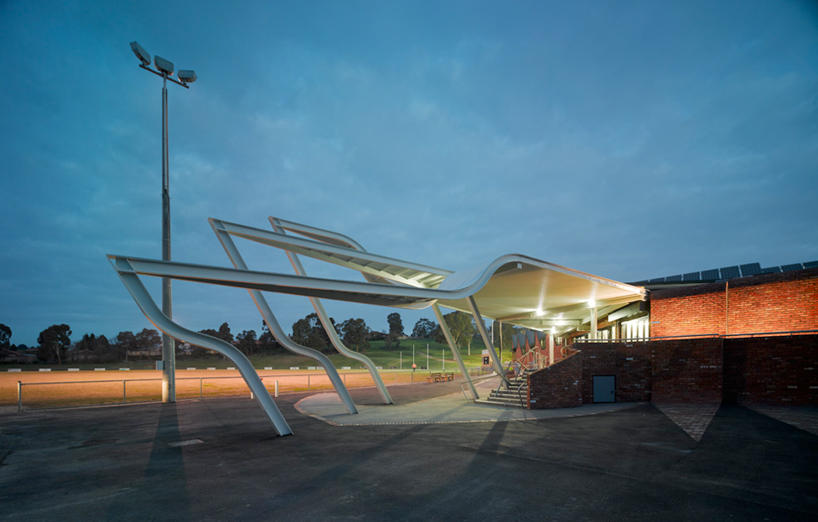
entrance
referencing sports elements such as football jerseys and flags, the building's elevation features a series
of v-shaped patterns. the toothed roof is lined with alternating windows and solar panels, allowing the
facility to comply with various sustainable elements, while also bringing natural light into the change
rooms that sit beneath them.
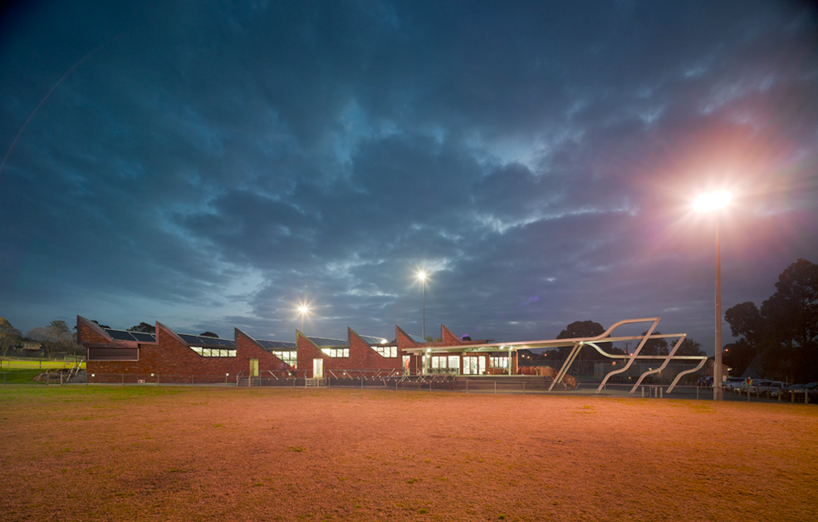
side elevation
the overhang that greets the players and visitors at the entrance splices off into three fluid branches that
appear as though they are in motion. the architecture, composed of a series of angular and rounded edges,
is intended to generate energy and spectacle for the impending game on the nearby playing field.
the nondescript facade, which is inscribed with the names of past and present players, volunteers and
members of the town, relies on light and shadow to emphasize its form and direction.
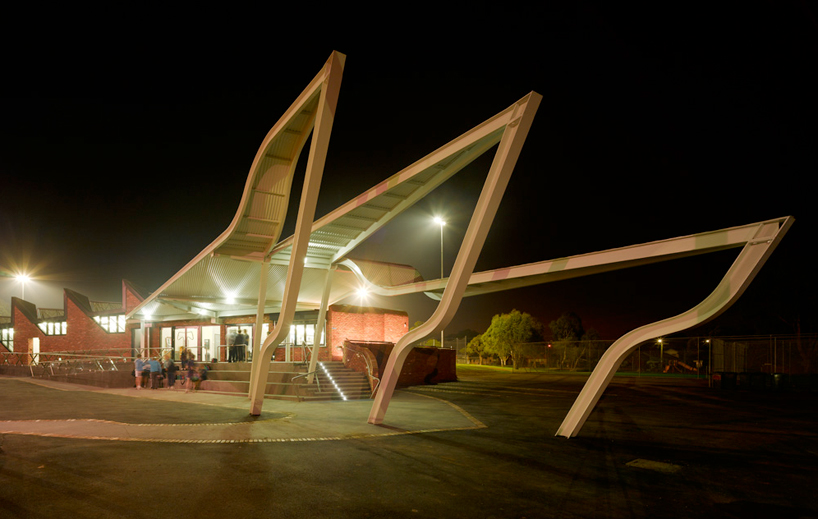
entry overhang

outdoor space

entrance to change rooms
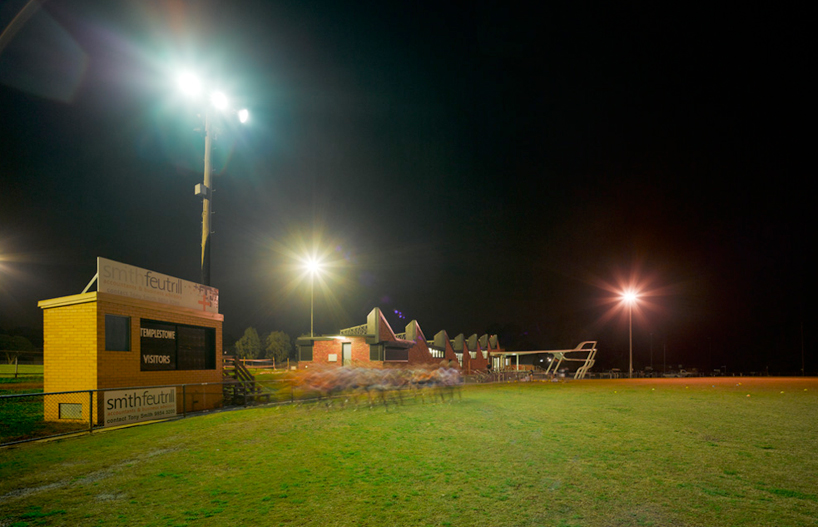
view from the field
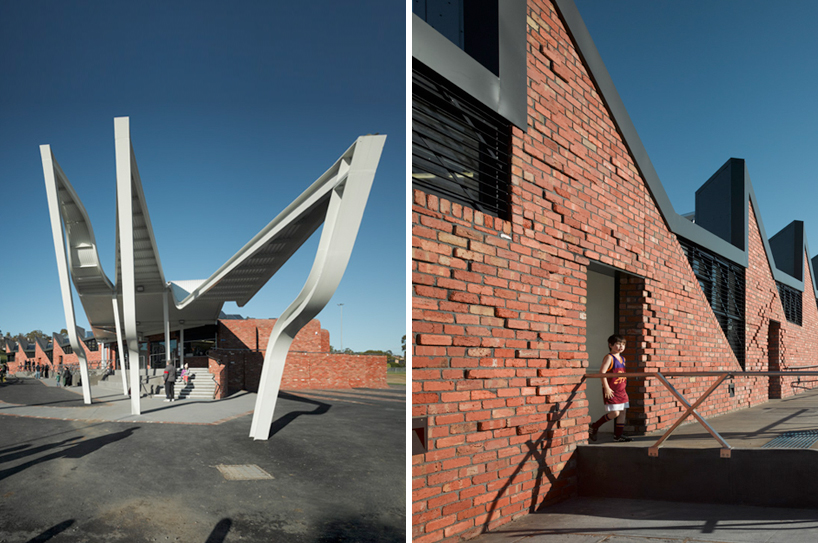
detail of recycled brick

change rooms connect directly to the field

the triangular brick motif is carried onto the pavement, extending the motion and visual footprint of the structure�

light and shadow add interest to the facade
Phooey architects:
 'templestowe reserve sporting pavilion' by phooey architects in melbourne australia
'templestowe reserve sporting pavilion' by phooey architects in melbourne australiaimages courtesy of phooey architects
Melbourne based studio, phooey architects has created 'templestowe reserve sporting pavilion',
a climate, carbon and water neutral building that houses the australian suburbs 100 year old football
and cricket club. exploring multiple aspects of sustainability, the construction of the design is largely
recycled and cultivated from the previous site.

entrance
referencing sports elements such as football jerseys and flags, the building's elevation features a series
of v-shaped patterns. the toothed roof is lined with alternating windows and solar panels, allowing the
facility to comply with various sustainable elements, while also bringing natural light into the change
rooms that sit beneath them.

side elevation
the overhang that greets the players and visitors at the entrance splices off into three fluid branches that
appear as though they are in motion. the architecture, composed of a series of angular and rounded edges,
is intended to generate energy and spectacle for the impending game on the nearby playing field.
the nondescript facade, which is inscribed with the names of past and present players, volunteers and
members of the town, relies on light and shadow to emphasize its form and direction.

entry overhang

outdoor space

entrance to change rooms

view from the field

detail of recycled brick

change rooms connect directly to the field

the triangular brick motif is carried onto the pavement, extending the motion and visual footprint of the structure�

light and shadow add interest to the facade
تعليقات
إرسال تعليق